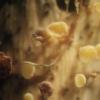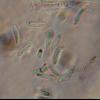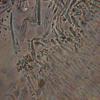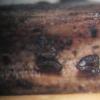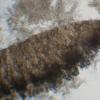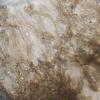
30-12-2025 16:44
Pascal DucosBonjour,Une anamorphe rose stipitée, très nombre

30-12-2025 17:14
 Bernard CLESSE
Bernard CLESSE
Bonjour à toutes et tous,Pourriez-vous aider Albe

29-12-2025 10:15
Hulda Caroline HolteHello, I found and collected this propoloid ascom

30-12-2025 09:04
Hello.A Pyrenomycete sprouting sparsely but very d

29-12-2025 17:44
Isabelle CharissouBonjour,J'aimerais savoir si d'autres personnes au

12-11-2021 00:03
Lepista ZacariasHi everybody,A week ago in my fiels trip I noticed

29-12-2025 17:12
 Bernard CLESSE
Bernard CLESSE
Bonjour à toutes et tous,Pourriez-vous m'aider à

Hello, dear friends!
These 2 specimens some time ago i identidied as C. cyathoidea. Now I see some differences in spore morphology, and I wonder whether one of them could be C. pallida.
The 1st was examined in fresh condition, the 2d in exciccated state.
So, the 1st specimen was collected in oak forest, on Urtica dioica rotten stem.
Spores 7,3-12,6*2,2-3,6 um, with 1-3 small oil drops on each end.
Asci IKI B, with croziers, 49-68*3,6-5,5 um
Cheers,
Irina

in order to confuse you a bit :-)
C. pallida is a species with marginal teeth, at least as I understand it. It was treated by Breitenbach & Kränzlin under the wrong name C. dolosella. The marginal teeth are not shown on their photo, but they are mentioned, and I reexamined their material:
your whitish specimen could well be C. cyathoidea, quite a variable species. Are the spores actually up to 3.6µm? Regrettably, only the spores are alive in your preparations. Maybe you press too strong. The apical ring photo seems to exclude hymenoscyphus repandus.
The brown one reminds me of C. cacaliae.
Zotto

Hello, Zotto!
And thank you for answer.
Yes, I know about marginal teeth in C. pallida, but in my opinion they probably could be poorly visible/destructed, so on. The 2d one was collected in dry condition, so I cannot say surely whether it was brown in living state or not.
With best regards,
Irina



